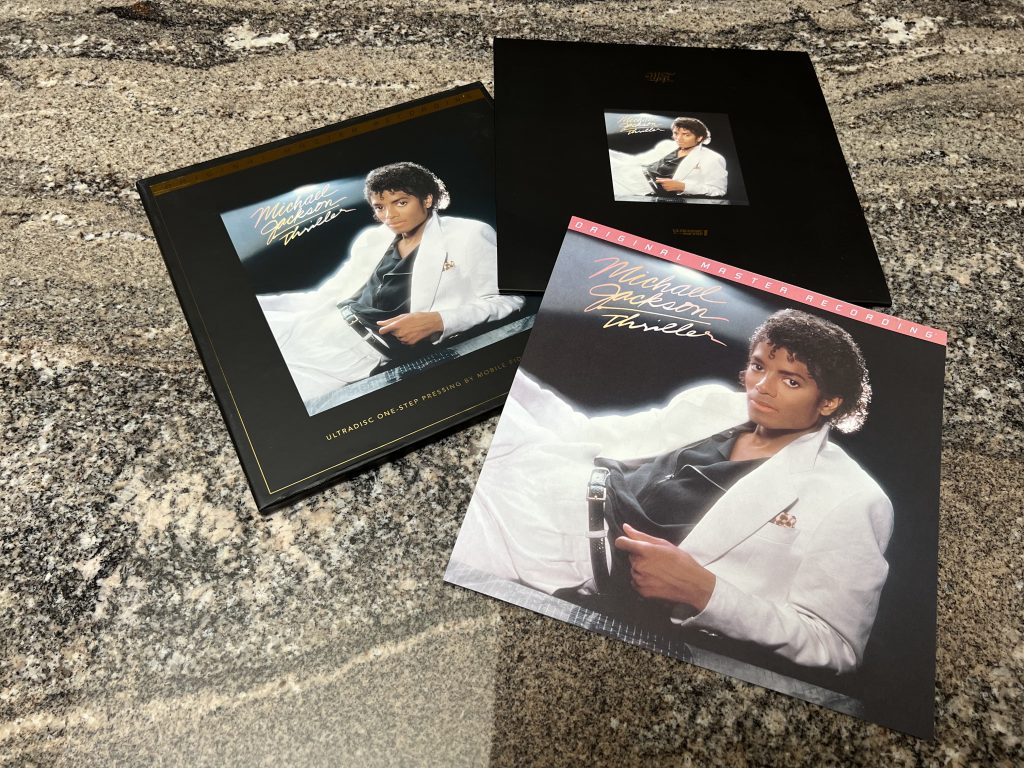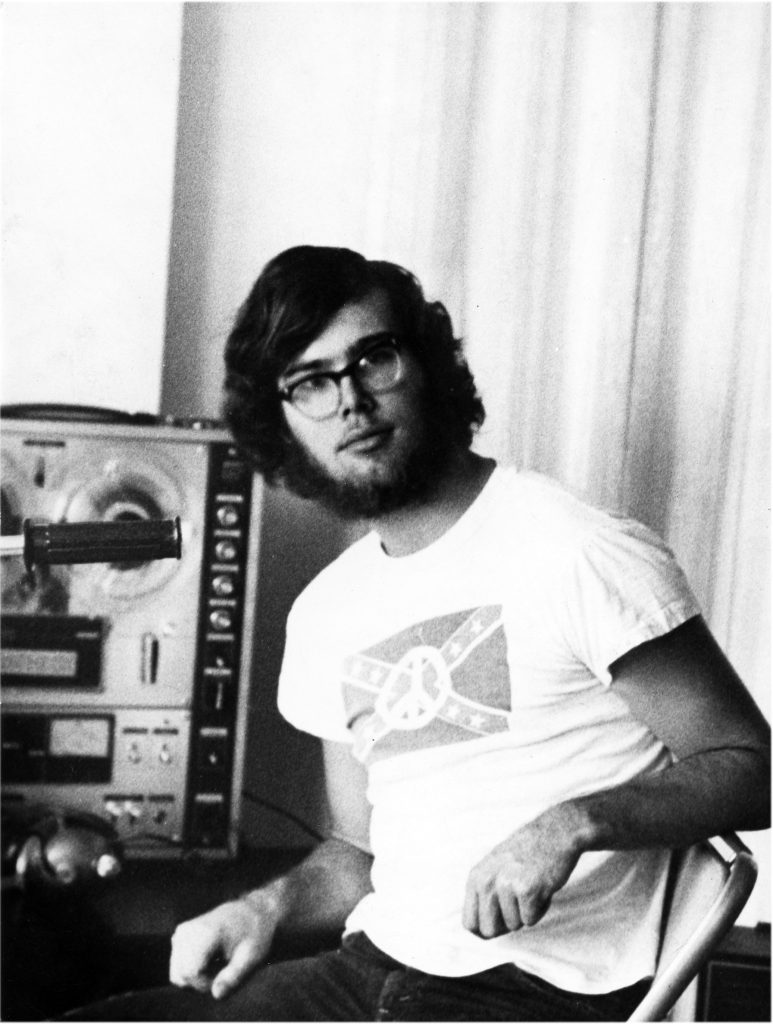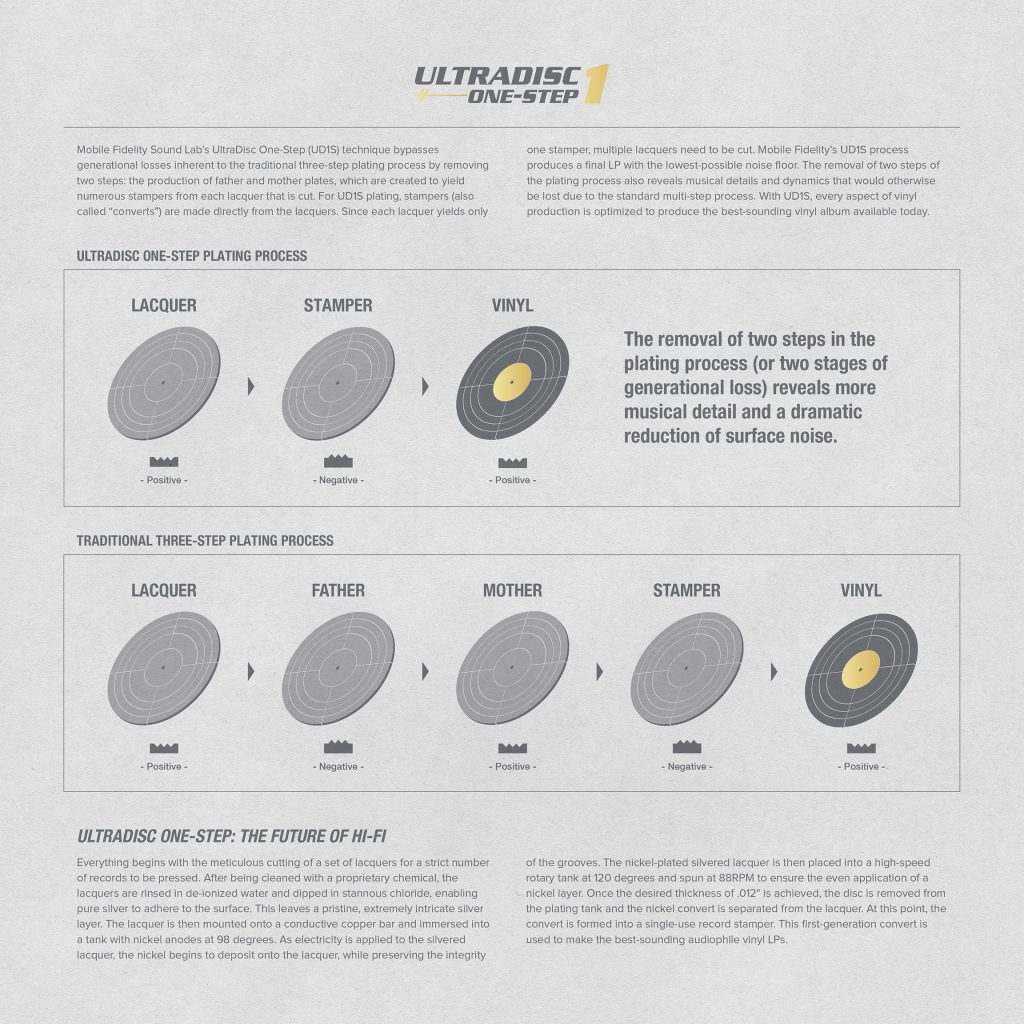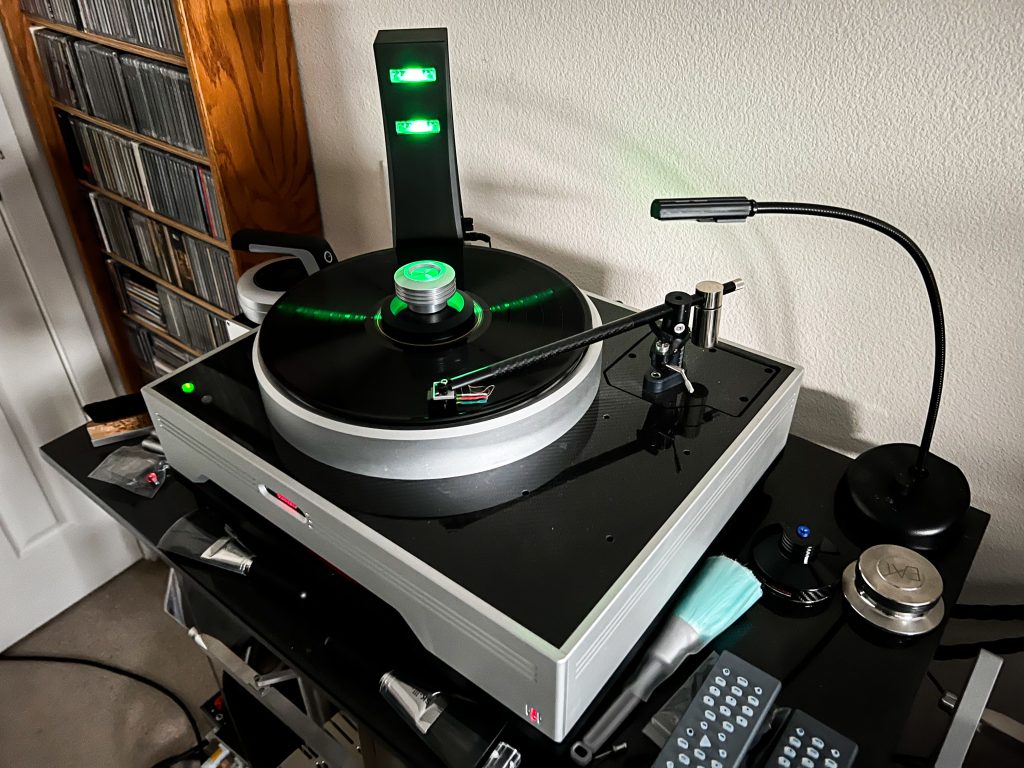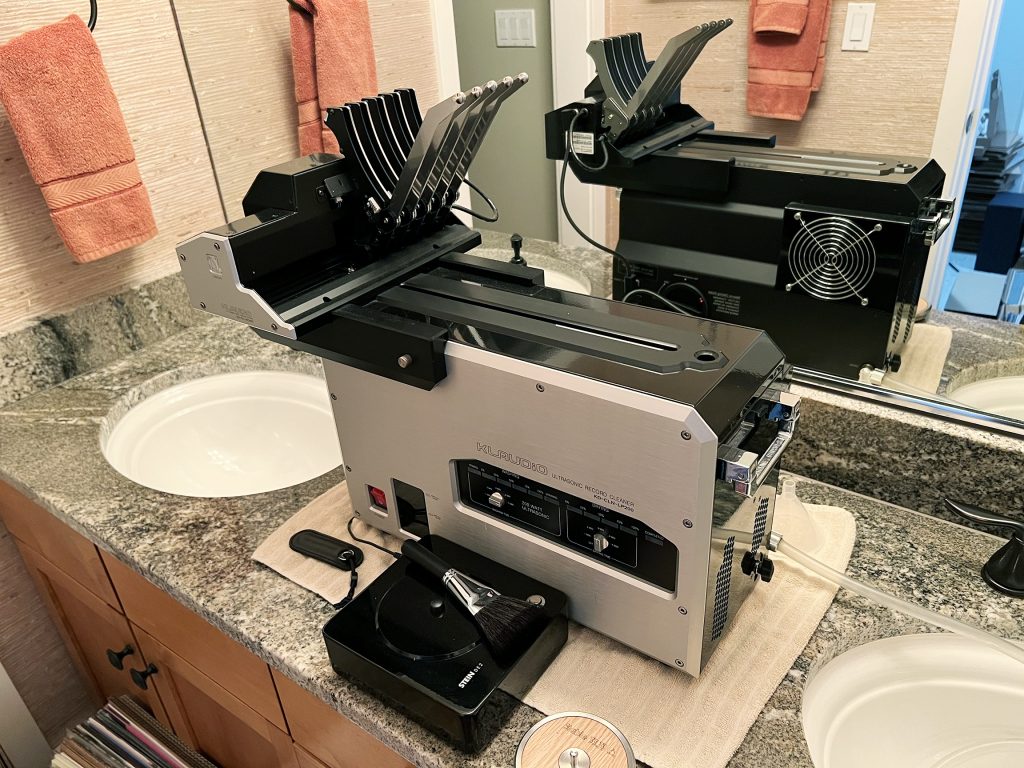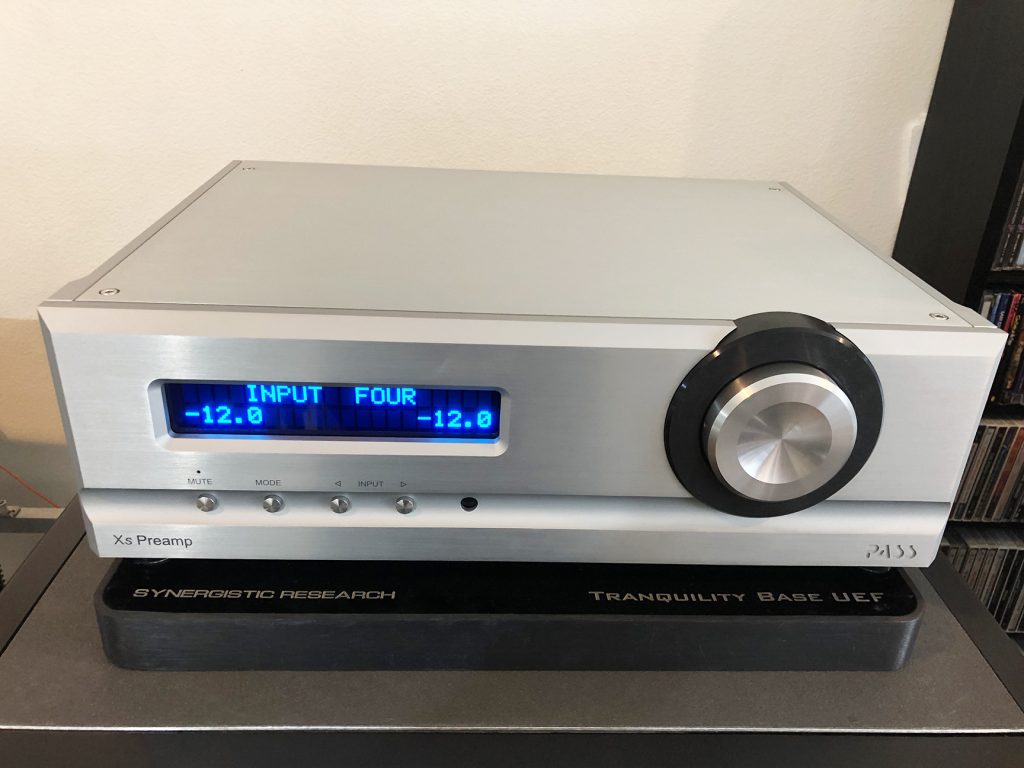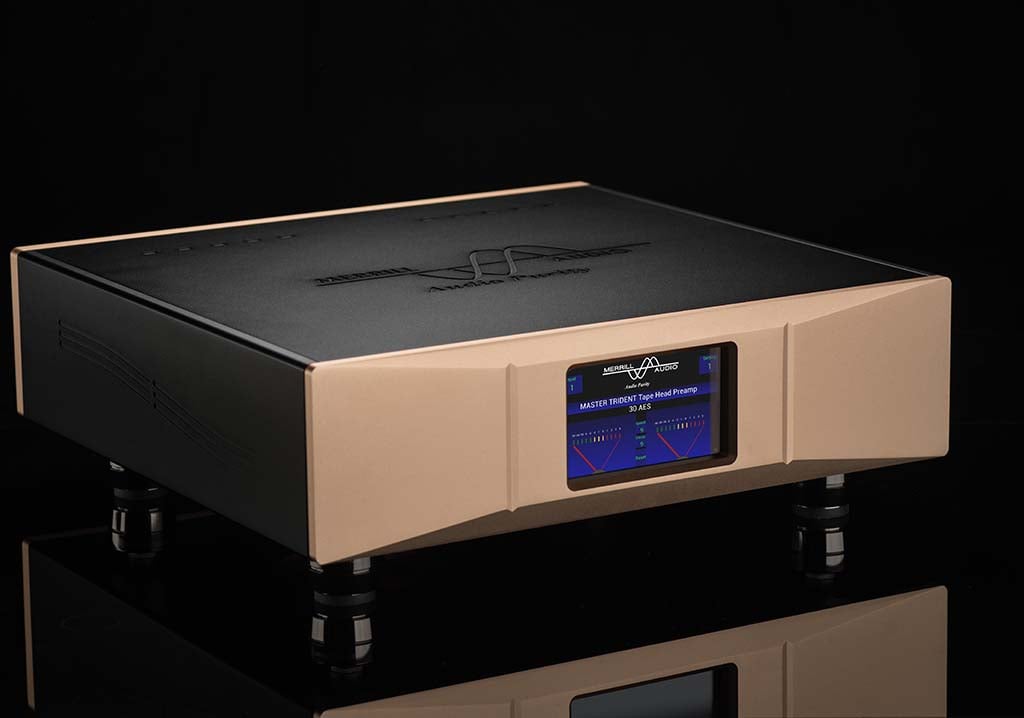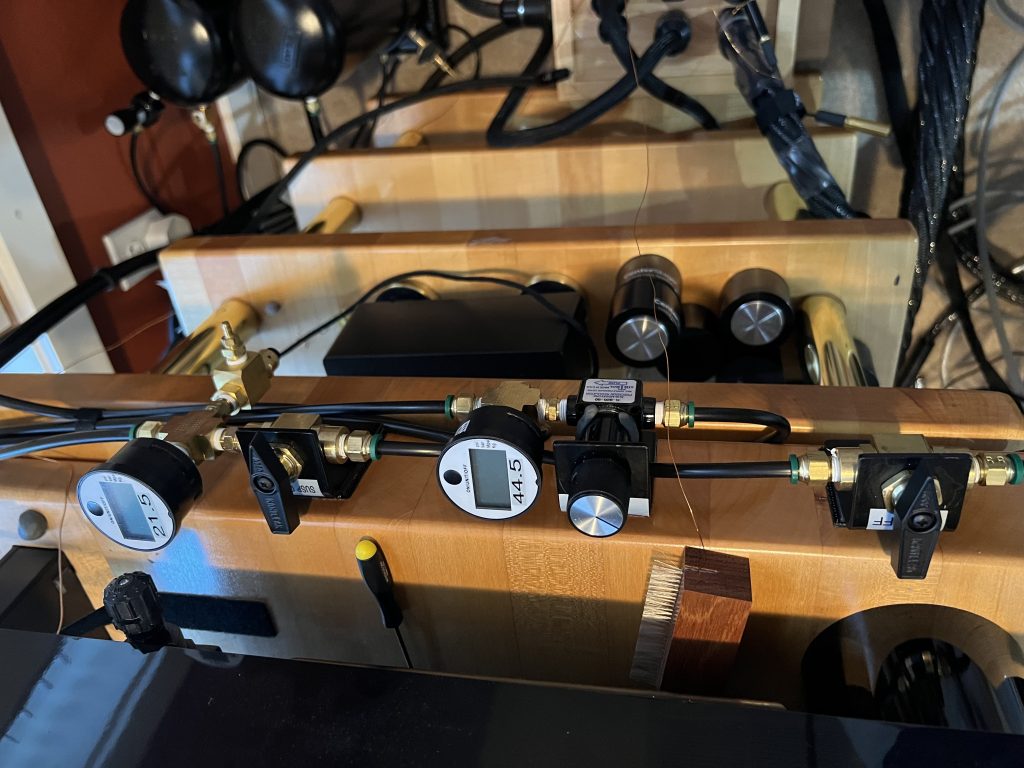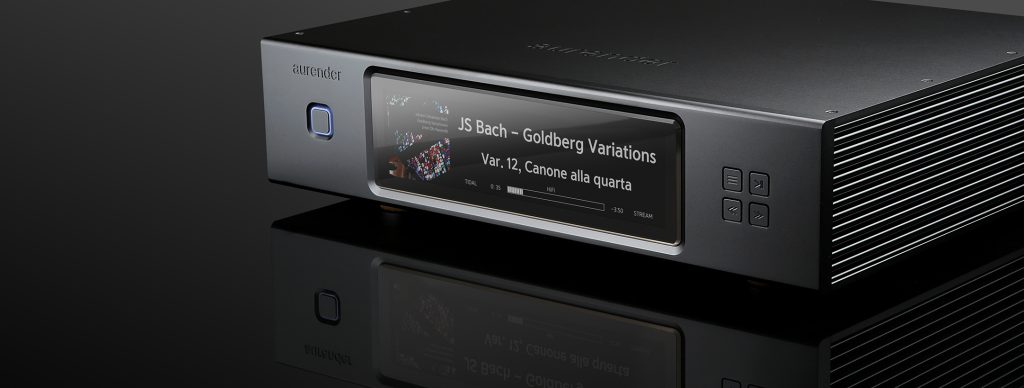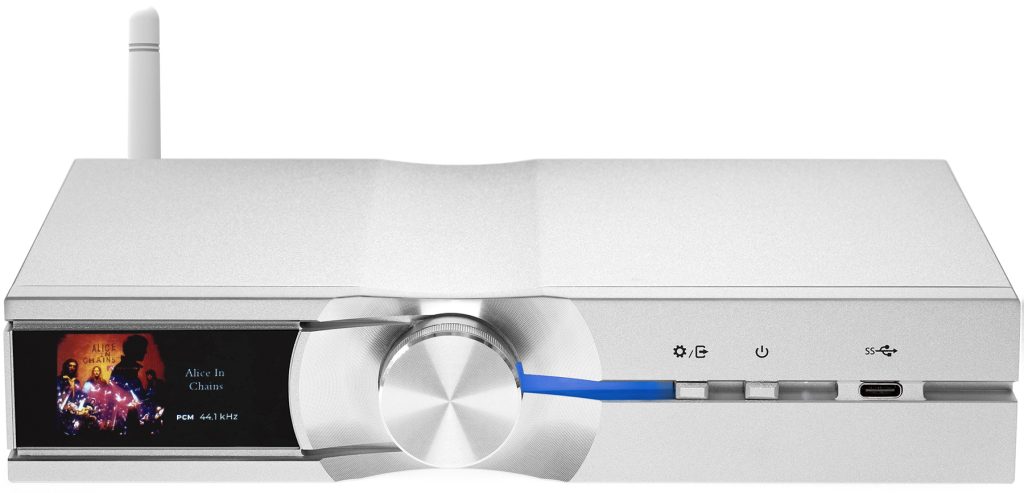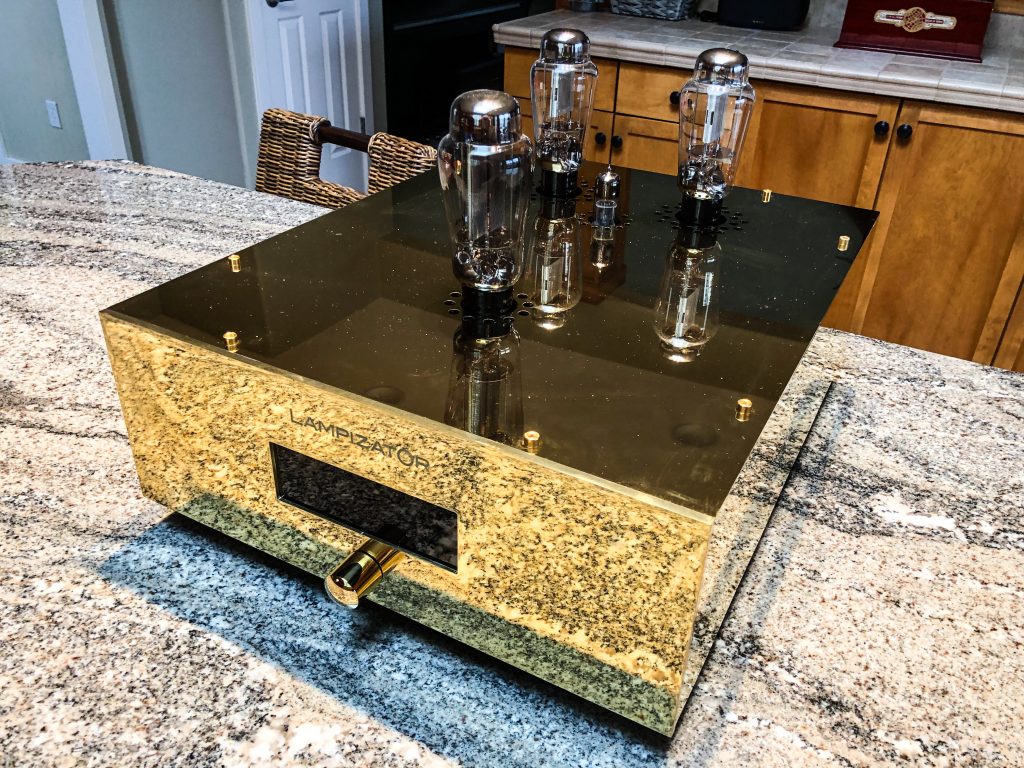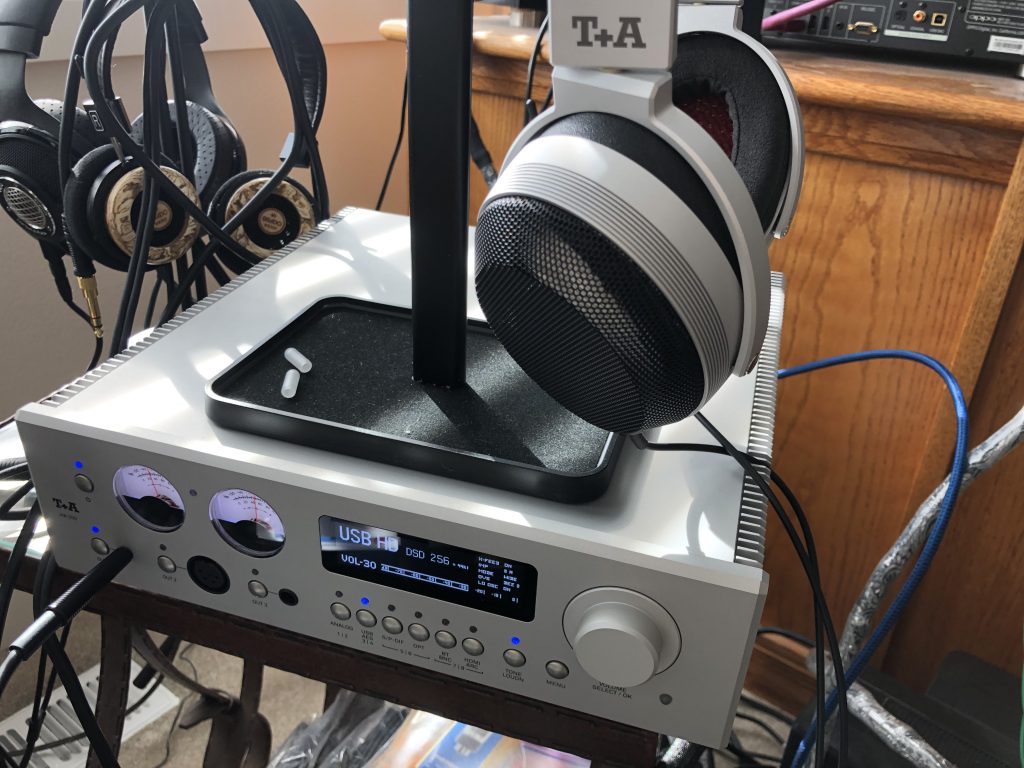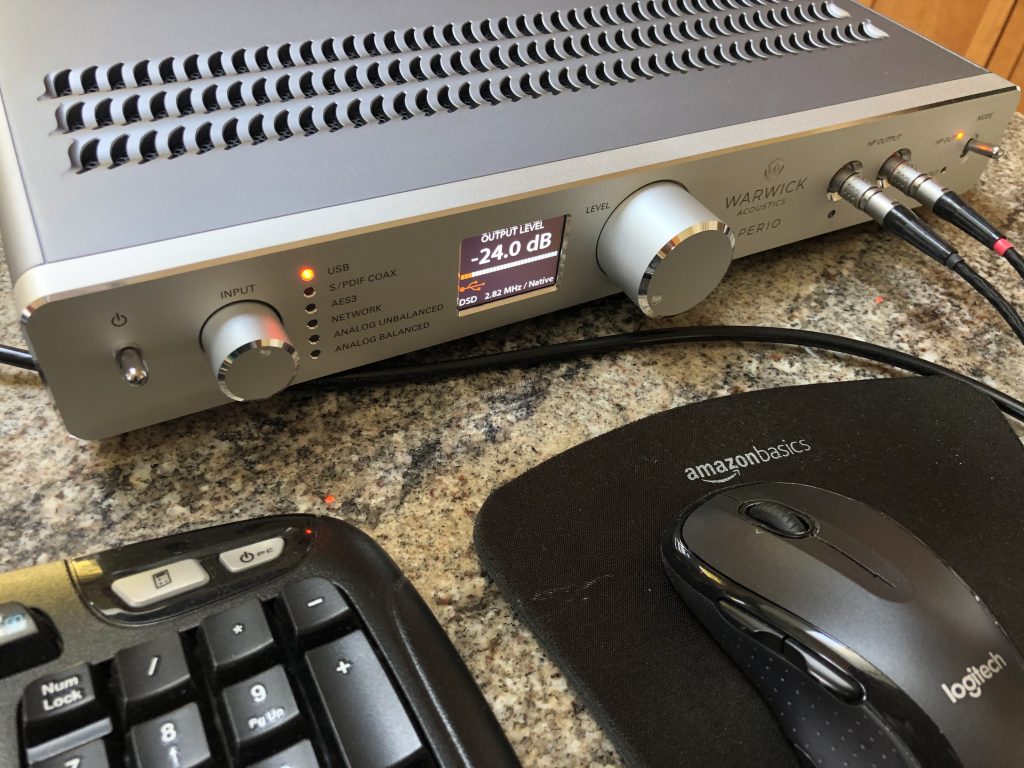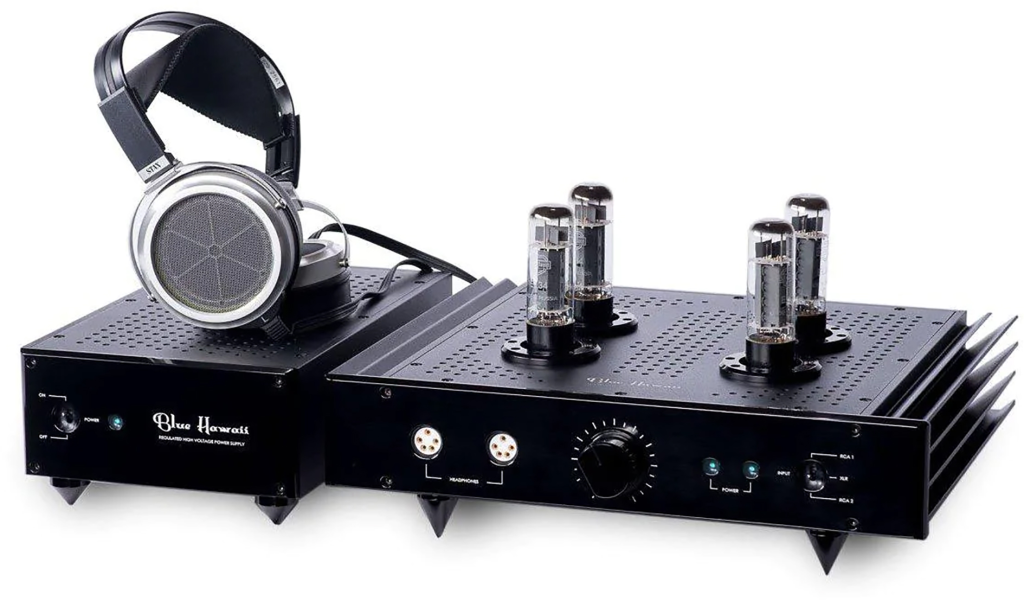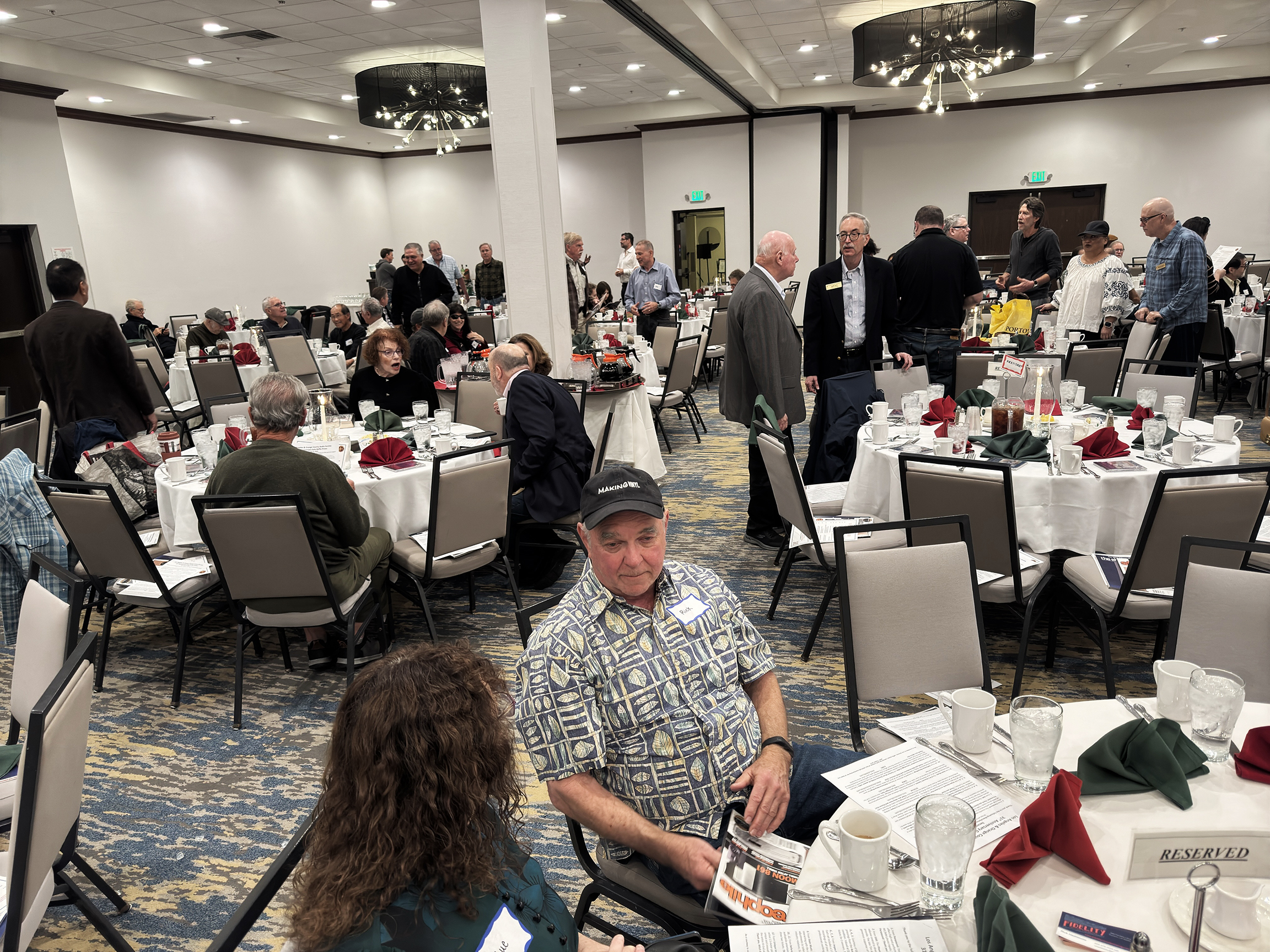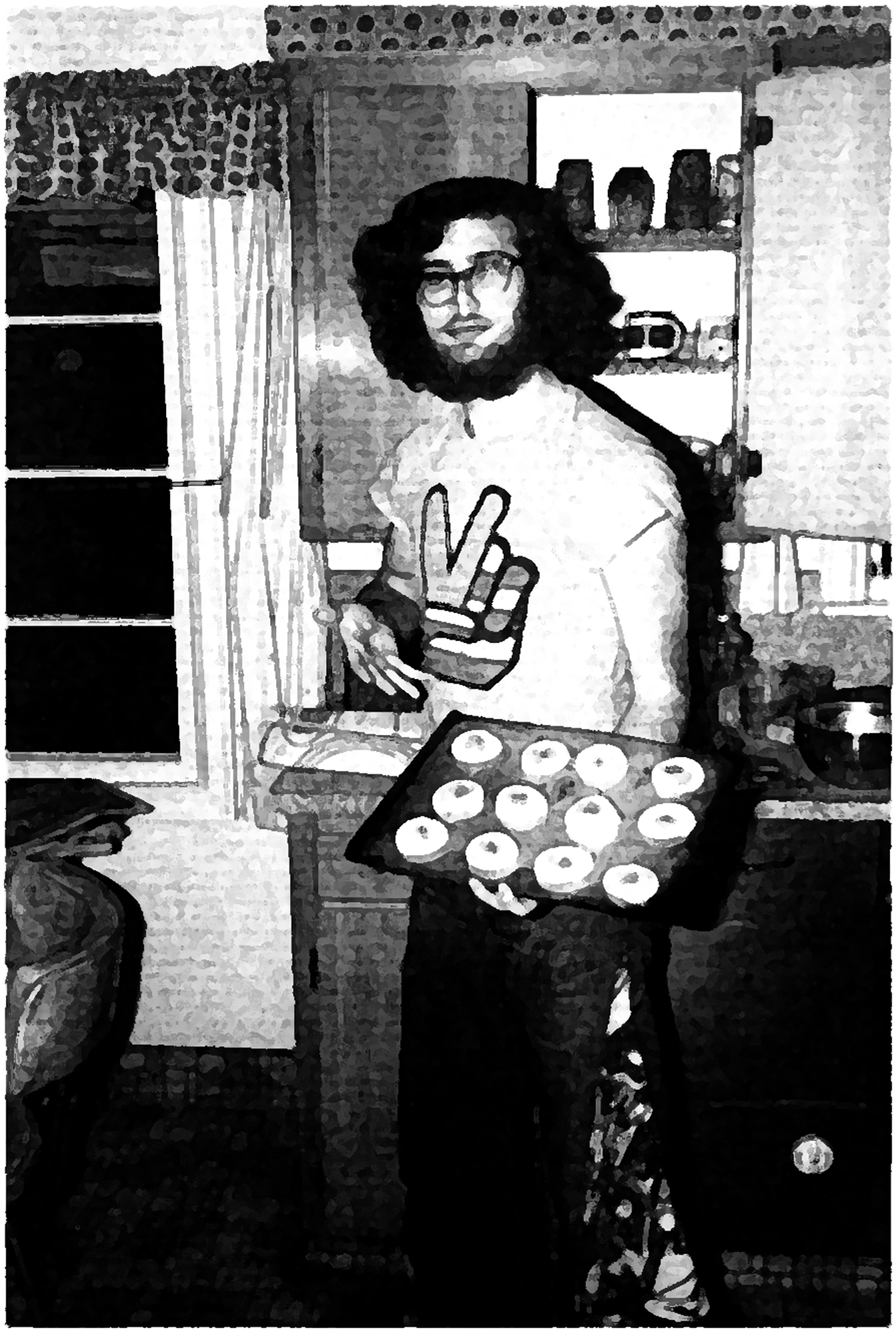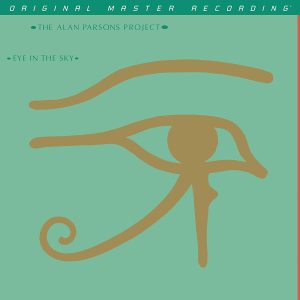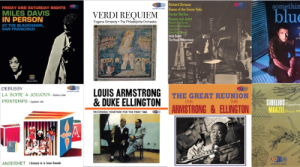Ye Olde Editor at RMAF 2019, in water color mode. Photograph by Scot Hull; image processing by that very Robinson himself….
About that One Step…
Audiophiles who are tuned into things analog, reissues of same, and record collecting are certainly aware of the recent controversy regarding the processing of Mobile Fidelity Sound Labs (MFSL, or MoFi) sources to produce their heretofore well-regarded Ultradisc One Step (UD1S) series of LP. Without going over that ground in bleary detail again, I can summarize the challenges addressed by MoFi briefly.
Starting around 2014 according to Discogs.com, but actually beginning in late 2016 according to Mobile Fidelity, MoFi began to issue albums in a new "One Step" version. (This was done incorporating DSD256 on the Merging Technologies Horus A/D converter and Pyramix DAW software, a component that I have used to product DSD256 transfers myself. See the TAS interview HERE quoted on the MoFi Web site for more details.) Certain titles transferred between 2011 and 2014 did employ DSD64 via the Meitner A/D converter. This was before the Horus A/D was released. The first Ultradisc One Step was Santana's Abraxas, which was cut using DSD64 in 2014, but wasn't issued until late 2016. Abraxas is long out of print, but is pulling down stratospheric asking prices over on eBay and Discogs these days.
Normally, LPs are produced by taking the original source (an analog tape that's as close to the original stereo or mono master as possible), and having a highly skilled audio engineer cut a lacquer in real time from that. Then the lacquer, called the "Father," is plated, and that metal plating is used to produce a "Mother" of the original plated master. The Mother is then plated to produce a "stamper," which is used to produce a run of albums. These can be numbered in the run-out groove, as in "S1" signifying "Stamper 1," the first stamper run done from upstream. In theory, this would be the closest to the original analog source, since repeated pulls of stampers from a given Mother would be subject to wear of the Mother.
The number of pressings that can or should be made from a stamper is a subject of debate. The general public is oblivious to the question, being unaware of its significance. Audiophiles prefer to see short(er) runs on a given stamper, usually up to 1,000 pressings per stamper as a rough rule of thumb, before having to produce/use another stamper from the Mother. This also puts wear on the Mother, of course.
For small runs of a given title, say around 2500, this isn't too much of a problem, but with larger runs of 5000+ LPs, the source tape will have to be used repeatedly to assure the highest fidelity in producing new Father/Mother/stampers.
David W. Robinson with his first RTR machine and recording kit, Sao Paulo, Brasil, 1970. Photographer unknown.
Given the fragility of analog tape, a medium that I have loved since I was 15 years old, but know the limited life and use of analog tape at the production level, there is a definite brick wall beyond which its wonderful qualities begin to fade. Audio engineers involved in mastering that I have spoken with have told me that they can hear the loss of analog magic within just a handful of playbacks of a source. It is subtle, at first, but becomes more definite with use.
Which is not to mention the challenges of proper storage of master tapes/stereo mix copies, including temperature, humidity, misplacement/loss, fire (e.g., UMG's 2008 catastrophe), aging/gummy tape splices, oxide shedding, the occasional development of mold, and problems with tape formulations over decades of experimentation and the production of same by various tape companies (whose number has been shrinking over time).
Then there's the question of the nature of an "analog master" that a label might supply for a given LP reissue project. Is it really the stereo master? The answer is complex; for more on this, read Harold Tichenor's recent excellent summary of tape archives and tape categories in PF Issue 122, which you can find HERE.
Beyond that, there's the problem of sourcing and maintaining professional analog tape machines in a time in which they are no longer in significant production…much to my dismay. Note too that many of the finest mastering tape machines are in the category of one-off heavily customized/modded configurations, literally quite unique…usually to the audio engineer that did the mods.
And when you finally have that magic machine, are you taking the time to fix gooey splices, assure proper tape speed on playback, and getting that critical parameter of tape azimuth correct on every track?
Then there's the question of your cutting lathe…what kind, what quality…and the experience/craftsmanship of the audio/mastering engineer. Does he or she understand the recording, and are they highly skilled in cutting the lacquer's grooves?
All of this means that producing reissues from analog is a very tricky thing, requiring mastery of the audio crafts involved.
Meanwhile, the analog tapes are aging, and repeated playbacks cause wear. What a conundrum!
Mobile Fidelity's One Step Series
MoFi's One Step as originally announced by them involved the elimination of two of the steps involved in pressing an LP. As you see, the production chain illustrated was the traditional process for making LPs.
Mobile Fidelity's original diagram for its Ultradisc One Step process
The recently (2022) revised diagram highlights the fact that the original source tape, after and cleaning/repairing/azimuth checks/etc. is first taken to DSD256 (Quad DSD) for indefinite archiving to storage, and for use in the pressing process without causing loss to the original analog source tape.
MoFi's revised Ultradisc One-Step diagram for LP production
The Ultradisc One Step production chain significantly improved the production process by eliminating two steps in pressing LPs. In theory, this would improve fidelity, lower multi-generational analog noise, and place the final LP much closer to the supplied source. Furthermore, since multiple playings of the original source material are avoided…the DSD256 version provides this without loss or wear…then the number of albums that could be produced are limited only by licensing, production schedules, and demand. No more "S1," "S12," and so on, since the DSD256 is not subject to wear. The only variations from one convert batch to the next would be any differences in the skill of one audio engineer to the next, or one custom reel-to-reel deck to another.
The results of the One Step process are tangibly superior. Everything in the One Step LPs, from the quality of the process to the final packaging exuded excellence, and the series was generally praised over the years. I own a number of One Steps, and I concurred: the MFSL One Step LPs sounded brilliant to me, without exception. They were certainly better than any mass production albums that I had of the titles in question on my shelves. I considered their superior A&R and production, with its increased costs, to be well worth the return that I was experiencing in my listening room. And the One Steps are fetching some serious bucks when they were re-sold on sites like eBay and Discogs.
The Sound
Regardless of the controversies swirling about the use of DSD in the Ultradisc One Step process, the main question for me…as always…is how does the resultant LP sound?
This is the really easy part.
The MoFi UD1S version of Thriller (which is issued as a single LP 33.3 RPM LP) is significantly better than my original standard LP from the 1980s in every way.
Mobile Fidelity's UD1S of Thriller during playback on the Dohmann Helix Two MK2 turntable/Schröder CB-11 12" tonearm/Phasemation PP-2000 MC cartridge/Gold Note PH-1000 Phono Stage and PSU-1250 Power Supply
First of all, the physical album that I have is commendably flat, and well centered. I have the exceptional DS Audio ES-001 Eccentricity Detection Stabilizer here, but there's no need in the case of this reissue. It runs flat on our Dohmann Helix Two MK2 turntable, and there is no sign of eccentricity…no wow and flutter…to be heard. I'd rate the review sample physical medium to be of the first order.
Listening to MoFi's Thriller was a transforming experience. The rest of my playback path from the turntable system listed above consisted of Synergistic Research SRX Phono Cables (RCA to RCA from the Gold Note PH-1000 with the PSU-1250 Power Supply) to the world-class reference Audionet Stern Preamp, to a pair of reference Audionet Heisenberg Monoblock Amplifiers by way of a pair of XLR Kubala-Sosna Elation! interconnects, and thence to a pair of YG Acoustics Sonja 2.3i Loudspeakers, courtesy of a reference set of GamuT bi-wire speaker cables. Overall, quite an exceptional system for the sort of critical listening that I do, but also intensely musical.
Before listening, I ran the album through my KLAudio KD-CLN-LP200 ultrasonic record cleaner with the 5-LP loader option, as is my usual practice with new arrivals. Then off to the listening room.
When I cued up Thriller, I was immediately struck by the quietness of the pressing. No tics/pops. No distractions. So far, so great.
But then…the music.
And…damnation! What a show! Each track was a revelation of what I had been missing before now, which is as it should be as the state of the art advances, no?
I have some favorites that were key to my reaction to MoFi's reissue. Mine include "Starting Something," "Girl is Mine," the title cut "Thriller" (of course!), and especially "Beat It" and "Billie Jean."
Taken together, I'll freely admit that my evaluation of this MoFi One Step is really a rave. Michael Jackson and company shakes the listener with a punchy, dynamic dose of MJ-pop, interspersed with mellow, moody songs. You particularly hear the kick in "Thriller," "Beat It," and "Billie Jean." The tonal balance of the album was admirable on all tracks, from the tight bass lines, to MJ's midrange, which sparkled with presence and a beautiful, smooth feel. The overall frequency and harmonic balance were truly organic to my ears. And the upper frequencies were stratospheric, allowing the development of a soundfield…a true holographic experience of atmosphere.
And, you know, none of this sounds "digital." DSD256 is shown as totally analog-like in the production of this album.
Michael Jackson's musical performance and Quincy Jones's killer production values have been made clearer than ever before with this Mobile Fidelity One Step release. It does a "Beat It!" on every previous version of this album that I've ever heard.
Enough said. If you don't have this version of Thriller…get it!
Price: $100 (Anticipated production run: 40,000 albums)
Mobile Fidelity Sound Labs
1811 W. Bryn Mawr Ave.
Chicago, IL 60660
USA
Studio and Mastering Facilities:
Mobile Fidelity Sound Lab, Inc.
105 Morris Street
Suite 145
Sebastopol, CA 95472
USA
MoFi LPs and SACDs are generally available at your usual LP sources.
All photographs and image processing by David W. Robinson, except the portrait of Ye Old Editor by Scot Hull, image processing by David W. Robinson. Alice in Wonderland drawing by Sir John Tenniel, in the public domain.





